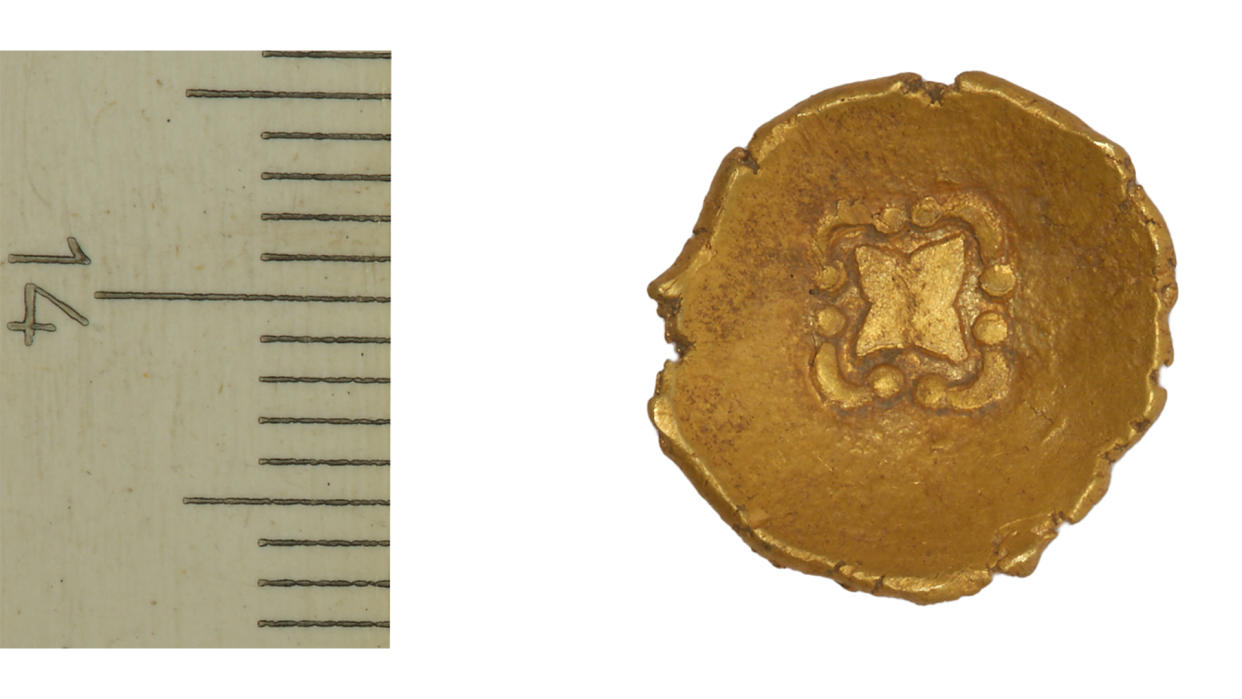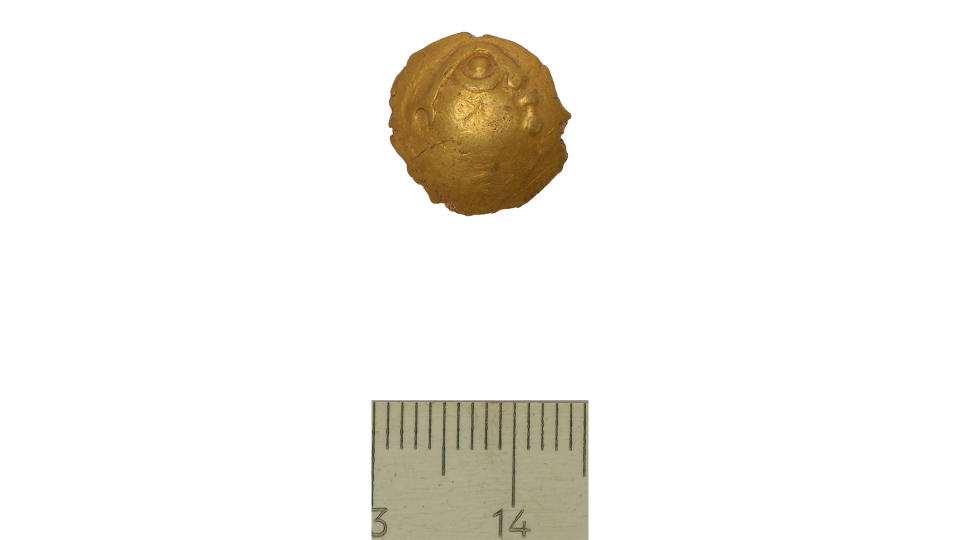Lost 'rainbow cup' coin minted by Celts 2,000 years ago discovered in Germany

An extremely rare "rainbow cup" coin minted more than 2,000 years ago by the Celts has been found next to a river in Germany, according to the Bavarian State Archaeological Collection.
The gold coin, minted in the second or first century B.C., features a rare design of a four-pointed star surrounded by arches on one side, said Bernward Ziegaus, a senior curator in the State Archaeological Collection's numismatic department who is studying the coin. Like other rainbow cups, the coin is curved.
"The name rainbow cup coins come from the legend that they are drops of gold that fall to earth at the end of a rainbow," Ziegaus told Live Science in an email. "Another legend about these Celtic coins tells us that these coins can only be found by Sunday children," or a child of fortune.
"In fact, the finder was born on a Sunday and is indeed a Sunday child, a lucky child!" he said.
The finder, a collaborator with state archaeological officials, discovered the coin this spring about 45 miles (70 kilometers) west of Munich on the Lech River in the southern state of Bavaria.
Related: 2,000-year-old Celtic hoard of gold 'rainbow cups' discovered in Germany

It's unknown how the 0.07-ounce (1.9 grams) coin ended up there, but the spot isn't far from a ancient road. This road went from what is now Trento in northern Italy and later became known as the Roman road Via Claudia Augusta that went across the Alps, Ziegaus said.
"Perhaps the coin was accidentally lost along the way," he said.
The "heads" side of the 0.5-inch-wide (13 millimeters) coin "shows a stylized human head with a large eye," with the nose and lips depicted as dots, Ziegaus said. A metal analysis revealed that the coin is 77% gold, 18% silver and 5% copper.
There are only three known rainbow cups with the star-and-arch motif. "The interpretation of the motive is difficult," Ziegaus said. "The star is perhaps a symbol for the four cardinal points, the arches are to be understood as signs for the horizon and the rising and setting of the moon.
The ancient Celts were fierce warriors who lived in mainland Europe and later sacked Rome. Bavaria's oldest Celtic coins date to the third century B.C., but the Roman conquest of the region in 15 B.C. led to the end of Celtic minting, Ziegaus said. After that, Roman coins became the main currency in the region.
RELATED STORIES
—Kentucky man finds over 700 Civil War-era coins buried in his cornfield
—Buried treasure of 44 Byzantine gold coins found in nature reserve in Israel
"It is a wonderful find, even if it is only one coin. Because only very few specimens of this type are known so far," said Marjanko Pilekić, a doctoral candidate of archaeology of coinage, money and the economy in antiquity at Goethe University Frankfurt, who was not involved in the finding.
If more rainbow cups are found in the area, "a picture of the [currency's] distribution can be drawn,' Pilekić told Live Science in an email.
The coin's finder donated the rainbow cup to the Bavarian State Archaeological Collection in Munich. Because it is "extremely rare," it will go on permanent display in the museum with other Celtic coin treasures in 2024, Ziegaus said.

